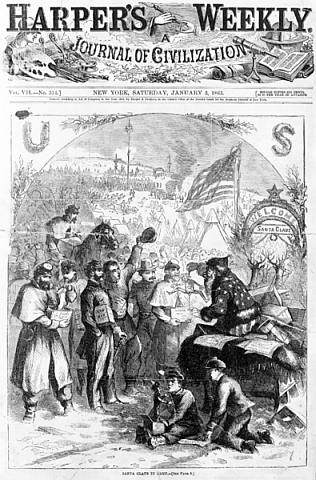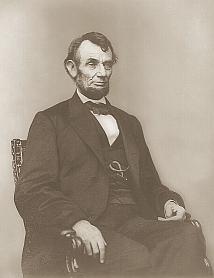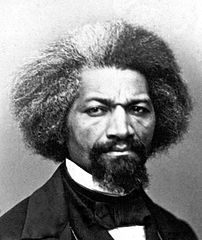Thomas Nast was a cartoonist and magazine illustrator. In 1860, Nast created campaign posters for Abraham Lincoln during Lincoln’s bid for the presidency. In 1862, Thomas Nast was working for Harper’s Weekly magazine and he was given the task to draw the Harper’s Weekly Christmas cover. Supposedly, President Lincoln asked Nast to draw a picture of Union troops being visited by Santa Claus.
Nast met Lincoln’s Santa Claus magazine cover request. The January 3, 1863 Harper’s Weekly magazine cover has Santa Claus on his sleigh passing out presents to Union soldiers at a snowy United States Army camp.
The soldiers are happy to have Santa visit their camp and two of them sit in the snow behind Santa’s sleigh as they open and play with their presents. Other soldiers are gathered with Santa as he gives them their Christmas gifts. A soldier on the left of the illustration has received a present of socks, socks would have been a greatly appreciated gift for a soldier during the Civil War. A sign with the words “Welcome Santa Claus” is prominent in the background, and in the distance you can see other soldiers coming on their way to see Santa Claus. Santa’s suit has stars and stripes on it, and at the bottom the magazine illustration has the words; “Santa Claus In Camp.”
Nast’s Harper’s Weekly Civil War Santa Claus cover is a patriotic theme for the magazine. Before January 3, 1863 both Antietam and Fredericksburg had claimed many Union lives, and without much, or any, progress for the Union war effort. The mood of the Union at this time was gloomy, on both the battle and home fronts. The Harper’s Weekly Civil War Santa Claus cover was designed with hope that it might raise Union morale. Nast would go on to draw many more Santa Claus illustrations for many years.
In general, wintertime was a time of military inaction during the Civil War as the armies of both the North and South would hunker down in camp to wait out winter. The winter weather, with its resultant snow, rain, ice, sleet, mud and muck and the complications of moving troops in these conditions made campaigns mostly impractical in Civil War times.
Despite the entertaining story of Thomas Nast, Abraham Lincoln, and Santa Claus on the cover of Harper’s Weekly, on Christmas day during the Civil War, fighting and dying did not pause for celebration of the Savior’s birth. Mankind’s sinful nature was fully demonstrated on Christmas day as the Civil War was fought.
Events of Civil War Christmas Days:
1860 – A Tuesday.
- This quote is actually from before the Civil War began, but these words written in a Camden, Arkansas diary reveal the concerns of people in December, 1860 as conflict between the North and South seemed inevitable. People were not at peace:
“Another Christmas has come around in the circle of time but it is not a day of rejoicing. Some of the usual ceremonies are going on, but there is gloom on the thoughts and countenance of all the better portion of our people.“
1861 – A Wednesday.
- In Washington, D.C., the Cabinet met to discuss Mason and Slidell, two Confederate commissioners to Britain who were being held in Boston after they were removed from a British ship by a Union warship.
- President Lincoln and his family had a dinner at the White House for guests .
- Confederate Thomas Jonathan “Stonewall” Jackson celebrated Christmas with his wife in Winchester, Virginia. This would prove to be Jackson’s last Christmas spent with his wife. Jackson would learn in 1863 at Chancellorsville that those who live by the sword, die by the sword.
- The Confederate schooner William H. Northrup was captured by the U.S.S. Fernandina off Cape Fear, North Carolina.
- Skirmishing took place at Cherry, in western Virginia, and there was a Union expedition in operation close to Danville, Missouri.
1862 – A Thursday.
- President Lincoln spent Christmas day in Washington, D.C. hospitals visiting injured soldiers.
- Confederate raider John Hunt Morgan and his men spent Christmas day continuing their Kentucky raid with fighting at Green’s Chapel and Bear Wallow.
- William Tecumseh Sherman and his corps were on their way to Vicksburg, they were near Milliken’s Bend, north of Vicksburg.
- A skirmish occurred near Warrenton, Virginia.
- A Union reconnaissance took place from Martinsburg to Charles Town in western, Virginia.
1863 – A Friday.
- Bear Inlet, North Carolina Confederate salt works were destroyed by Union troops.
- Beverly, West Virginia was reached by Union cavalry (the State of West Virginia had now been made from western Virginia).
- Union gunboats were busy in the Stono River, in South Carolina.
- The U.S.S. Marblehead came under heavy fire from Confederate batteries located on John’s Island, near Charleston, South Carolina. The U.S.S. Marblehead was hit twenty times, and the U.S.S. Pawnee and the mortar schooner C.P. Williams returned fire on the Confederate island battery. After an hour the firing stopped and the Confederates left. Two eight-inch sea-coast howitzers were captured by the Yankees.
1864 – A Sunday.
- The Federal bombardment of Fort Fisher, North Carolina continued with nearly sixty warships in action. The Yankees landed two miles north of the fort, took a battery, and moved close to Fort Fisher. As darkness came, Confederates came in from the north. The Federal fleet eventually wound up returning to Hampton Roads, and the last of their troops left Fort Fisher on December 27. At the entrance to the Cape Fear River, Fort Fisher remained under Rebel control, for now.
- In Fort Valley, Georgia Private Jackman of “The Orphan Brigade” wrote of his Christmas day:
“For breakfast had fresh pork, biscuit, sweet potatoes, etc. Cool disagreeable morning. At noon cold rain commenced falling. Bad prospect for a Christmas dinner — can’t cook in the rain. Slept all evening. Rain pouring down. Has been a most gloomy day — being the fourth birth day spent in the army. At night sat up late chatting around a smoky fire built under the sheds in the rain …“


